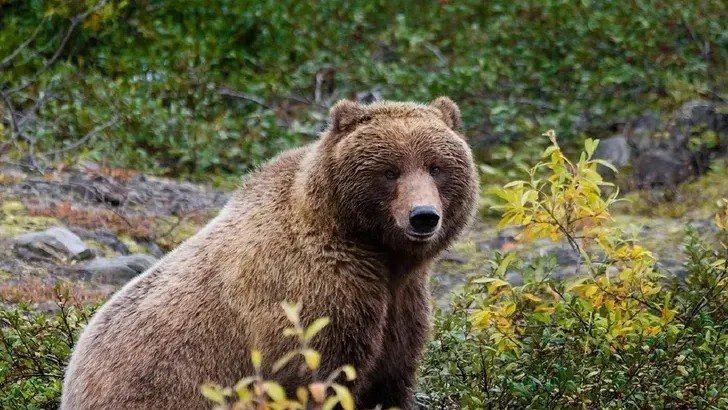Living in Alaska means sharing your backyard with some of North America’s most powerful predators. Whether you’ve just moved to the Last Frontier or have called it home for years, understanding how to coexist with bears isn’t just helpful – it could save your life. From the coastal giants that feast on salmon to the interior grizzlies roaming through your neighborhood, these magnificent creatures demand both respect and knowledge from anyone brave enough to call Alaska home.
Know Your Bear Species – Brown vs. Black Bears Are Very Different Neighbors
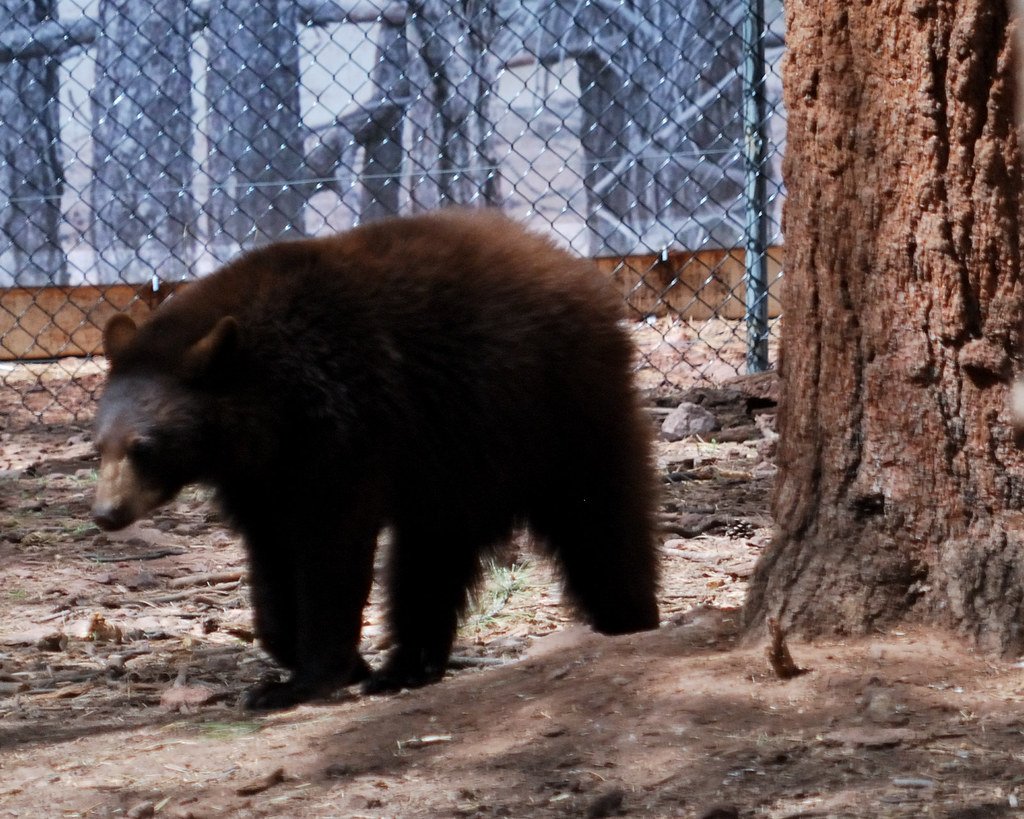
Alaska is home to both brown bears and black bears, and telling them apart could be the difference between life and death. Brown bears are usually larger than black bears, have a more prominent shoulder hump, less prominent ears, and longer, straighter claws. Black bears are most easily distinguished from brown bears by their facial profile and claws: A black bear has a straight facial profile and their claws are sharply curved, seldom over 1 1/2″ in length.
Here’s the surprising part that trips up many Alaskans: Color is not a reliable key in differentiating these bears because black and brown bears have many color phases and polar bears may have stained fur. For example, black bear fur may be black, brown, reddish or even shades of grey and white, while brown bear colors range from dark brown through very light blond. That “black” bear munching berries in your yard might actually be cinnamon-colored, while that blonde bear could be a massive brown bear looking for an easy meal.
Size Matters – Coastal Bears Are Absolutely Massive

Because a large bulk of their diet is vegetarian, grizzlies tend to be smaller than their relatives on the coast, who feast on the bounty of salmon runs. Brown bears on the shores of Alaska can reach massive proportions, weighing up to 1,650 pounds and standing 9 feet tall on hind feet. Think about that for a moment – we’re talking about animals that can weigh as much as a small car. These coastal giants dwarf their interior cousins, who typically weigh between 200 and 700 pounds.
“Brown bears” typically live along the southern coast of the state where they have access to seasonally abundant spawning salmon. The coastal areas also provide a rich array of vegetation they can use as food as well as a milder climate. This allows them to grow larger and live in higher densities than their “grizzly” cousins in the northern and interior parts of the state. If you live in coastal Alaska, you’re dealing with nature’s heavyweight champions.
Bear Spray Is Your Best Friend – And It Actually Works
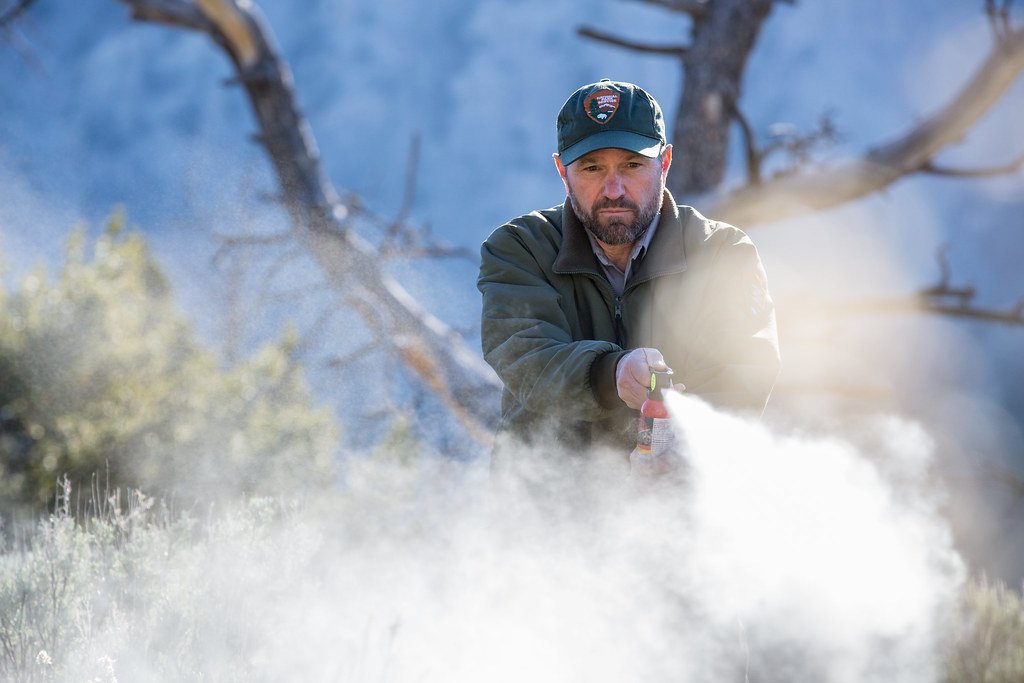
Forget everything you’ve heard about playing dead or making noise. The success rates of using bear spray range from 90-98%, while the number of humans injured when firearms are used in bear confrontations is 50%. EPA-registered bear deterrent sprays have been proven highly effective in deterring bears, with several brands meeting EPA requirements as repellents for all bear species.
But here’s what most people don’t know: “I think that’s why pepper spray has carved out a niche over the years as such an effective tool. You spray a bear and you have created a new number-one concern for the bear, it’s not you anymore.” Bear spray contains a higher concentration of the active ingredient – making it the stronger spray – and is designed to be shot at a further distance from the attacker. Bear spray can cause the swelling of a bear’s mucous membranes, shortness of breath and psychological effects such as panic, causing the bear to turn away and seek relief from the nearest water source. Keep it accessible, not buried in your pack.
Food Storage Will Make or Break Your Safety
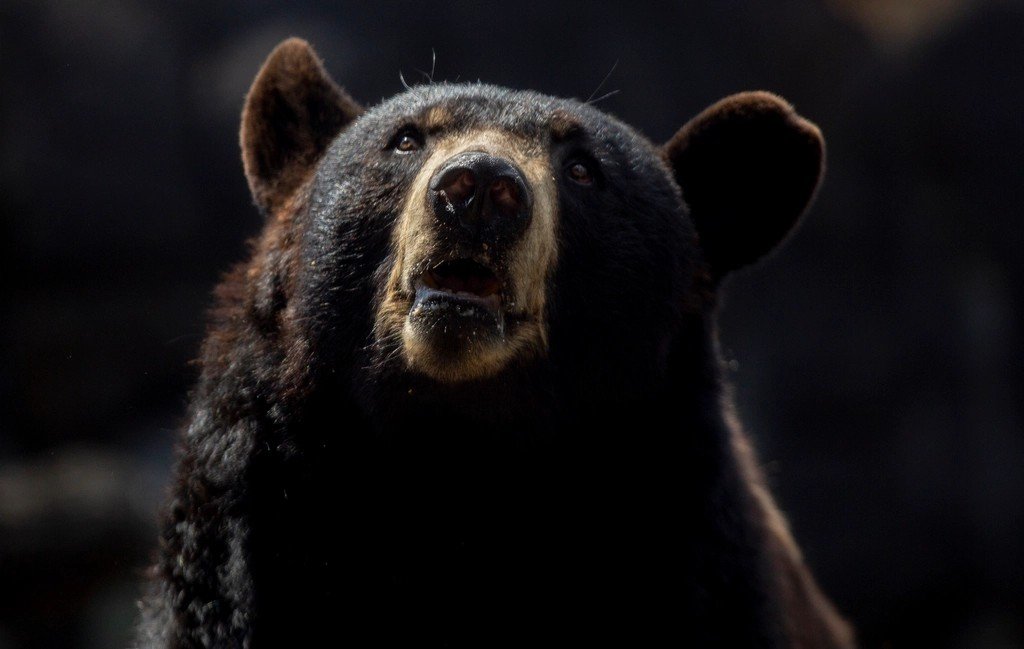
Bears have only a few months to build up fat reserves for a long winter in dens and are always looking for something to eat. Don’t let them learn that human food or garbage is an easy meal. It is foolish and illegal to feed bears, either on purpose or by not securing food or garbage away from bears. “A fed bear is a dead bear,” Hechtel says. He explains how ninety-five percent of food-conditioned bears will eventually become nuisances and have to be killed. Dick Shideler, also a biologist with the Department of Fish and Game in Fairbanks, says that once a bear associates people with food, it becomes a potential threat to all people in any future encounters.
Cook away from your tent. Store all food away from your campsite. Hang food out of reach of bears. If no trees are available, store your food in airtight or specially designed bear-resistant containers. Remember, food and garbage are equally attractive to a bear so treat them with equal care. Remember, pets and their food may also attract bears. Odorous items such as toothpaste, toiletry items and even gasoline should be stored away from your campsite and out of reach of bears. That leftover salmon from dinner or your dog’s kibble could literally be a death sentence for a curious bear.
Make Noise – Bears Hate Surprises More Than You Do

Make noise, sing or talk loudly. Always let bears know you are there. Most bears will avoid humans if they hear them coming. Pay attention to your surroundings and make a special effort to be noticeable if you are in an area with known bear activity or a good food source, such as berry bushes. This isn’t about being loud for the sake of it – it’s about survival through communication.
Hike in a group; groups are easier for bears to detect. Walk with the wind at your back, if possible. Bears can see almost as well as people, but trust their noses more than their eyes or ears. The wind direction matters more than you might think. Hike and travel in groups. Groups of people are usually noisier and smellier than a single person. Therefore, bears often become aware of groups of people at greater distances, and because of their cumulative size, groups are also intimidating to bears.
If You Fish – You’re in Bear Territory

Fishing in Alaska means fishing in bear country, period. Bears love fish even more than you do. If you make it so that bears can take your fish, they further associate people with food – which is bad for both people and bears. Don’t fish for bears. If a bear learns it can obtain fish just by approaching anglers, it will return for more. You’re essentially training bears to see humans as a source of easy meals.
If a bear approaches you while you are fishing, stop fishing. If a bear approaches and you have a fish on your line, give the line slack so the fish doesn’t splash – or if need be, cut your line. Put it in a bear-proof container or your car as soon as possible. Don’t leave it out – -bears will find it! Don’t leave fish carcasses lying around. If you can’t store them in an airtight container, throw them back into fast-moving water. That prized catch isn’t worth your life or the bear’s.
During Encounters – Stay Calm and Follow the Script

Stay calm and remember that most bears do not want to attack you; they usually just want to be left alone. Stay calm and remember that most bears do not want to attack you; they usually just want to be left alone. Continue to talk to the bear in low tones; this will help you stay calmer, and it won’t be threatening to the bear. A scream or sudden movement may trigger an attack.
Do NOT run or make any sudden movements. If the bear is stationary, move away slowly and sideways; this allows you to keep an eye on the bear and avoid tripping. Moving sideways is also non-threatening to bears. Do NOT run, but if the bear follows, stop and hold your ground. Bears can run as fast as a racehorse both uphill and down. Running triggers their predatory instincts – you’re not outrunning a bear, you’re just making yourself look like prey.
Mother Bears With Cubs Are Extremely Dangerous

Be especially cautious if you see a female with cubs; never place yourself between a mother and her cub, and never attempt to approach them. The chances of an attack escalate greatly if she perceives you as a danger to her cubs. If you see a cub alone, don’t approach. Momma bear could be nearby. There’s no such thing as a cute, harmless bear cub – where there’s a cub, there’s a fiercely protective mother nearby.
Mother bears are responsible for some of the most aggressive encounters because their protective instincts override everything else. Even if you have no intention of harming her cubs, she doesn’t know that. Pick up small children immediately. Your toddler might look like a threat or prey to a stressed mother bear, and small children’s high-pitched voices can trigger aggressive responses.
Know When Bears Are Most Active
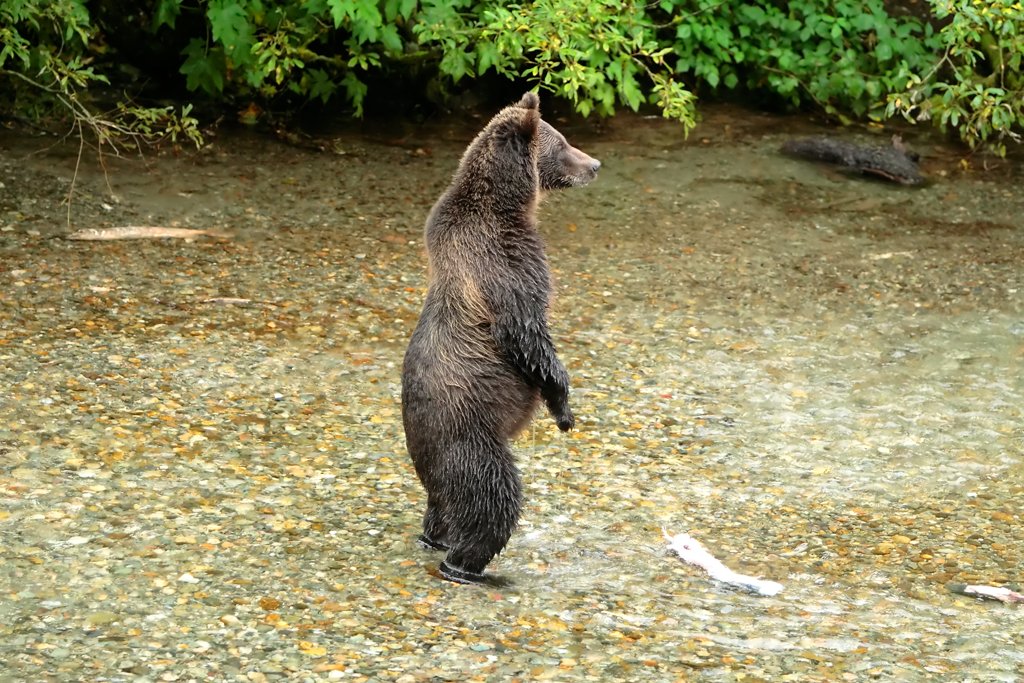
The best time to watch for bears is in spring and summer during the dawn and dusk hours when they are actively searching for food. Spring: In spring, black and brown bears are usually found on low elevation south-facing slopes, and in riparian forests and wetlands for early green vegetation and moose. Summer: During summer, brown and black bears are most commonly found in mid-elevation herbaceous habitats, in low elevation river bottoms and fluvial benches for early berries, and in high elevation burns and openings for berries. In some areas they also focus on anadromous waters for salmon. Fall: In fall, brown and black bears are most commonly found on large rivers for salmon and associated riparian forest areas for roots, late berries and fruits.
Understanding bear seasonality means you can anticipate where conflicts are most likely to occur. During salmon runs, bears congregate near streams and rivers. In late summer, they’re focused on berry patches to build up fat reserves for winter. Winter: In winter, most brown bears are in hibernation dens in alpine and sub-alpine areas; most black bears are in dens in forests. Winter is your safest season, but don’t get complacent – bears can emerge from dens during warm spells.
Understanding Bear Behavior Can Save Your Life
For years people have believed that the one thing predictable about bear behavior is that it’s unpredictable. The Alaska Department of Fish and Game biologists disagree. “Bears have reasons for doing things. It’s only from our lack of understanding that their behavior seems unpredictable,” says John Hechtel, a biologist with the Alaska Department of Fish and Game. Hechtel emphasizes that 95 percent of the time, people are responsible for determining whether the outcome of a bear encounter will be good or bad.
Bears may bluff their way out of an encounter by charging and then turning away at the last second. Bears may also react defensively by woofing, yawning, salivating, growling, snapping their jaws, and laying their ears back. Most bears tend to be wary of humans and often will do anything to avoid them, Hechtel explains. Learning to read these warning signs can help you respond appropriately instead of panicking and making dangerous mistakes.
Conclusion
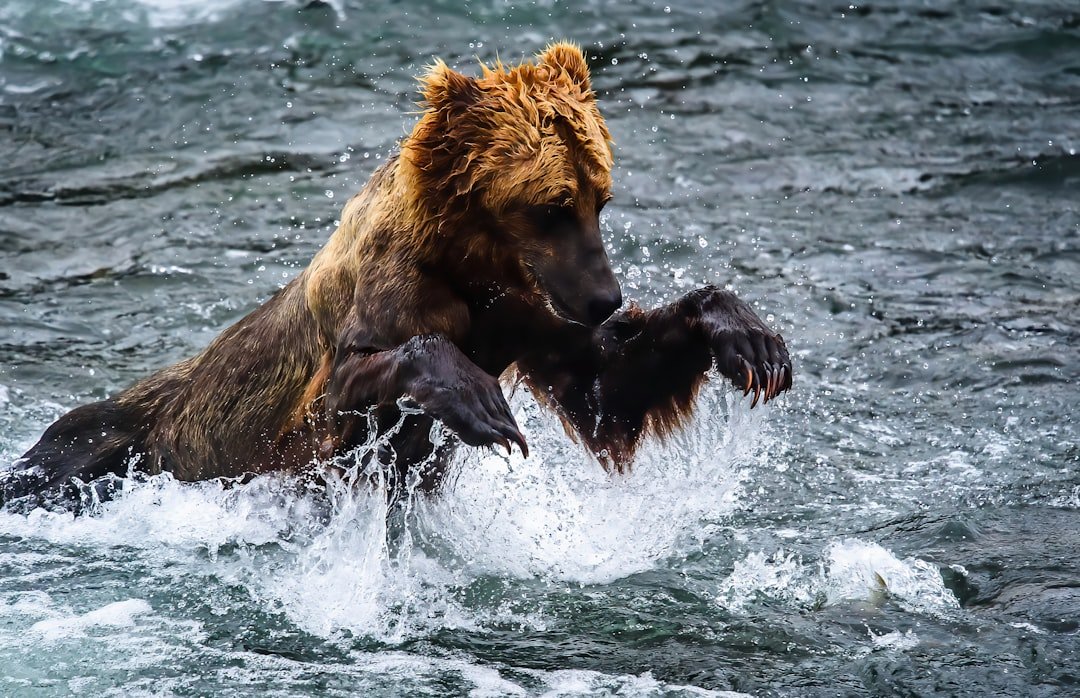
Living successfully with Alaska’s bears requires respect, preparation, and knowledge. These powerful animals have been thriving in Alaska for thousands of years, and with proper precautions, humans can coexist safely alongside them. Remember that most bear encounters end peacefully when people follow proven safety protocols. The key is prevention – proper food storage, making noise, carrying bear spray, and understanding bear behavior will keep both you and the bears safe. Alaska’s wilderness is magnificent precisely because it remains wild, and bears are an essential part of that wildness.
Have you ever wondered just how many close calls happen simply because people forgot the basics?
Sameen is a digital marketing and content specialist well versed in curating content aligned to audience needs. She has a passion for animals and creating animal content across social media.

